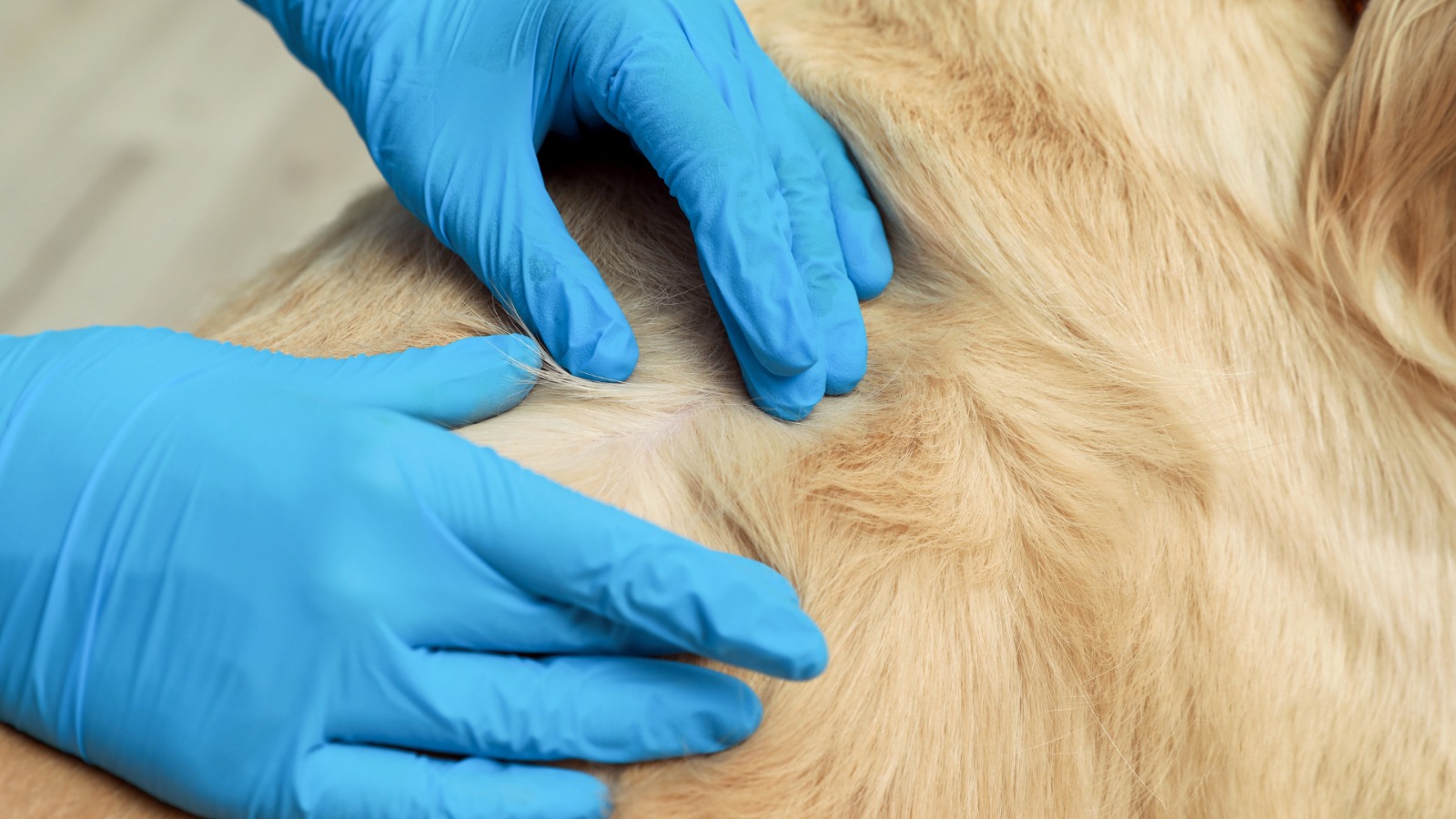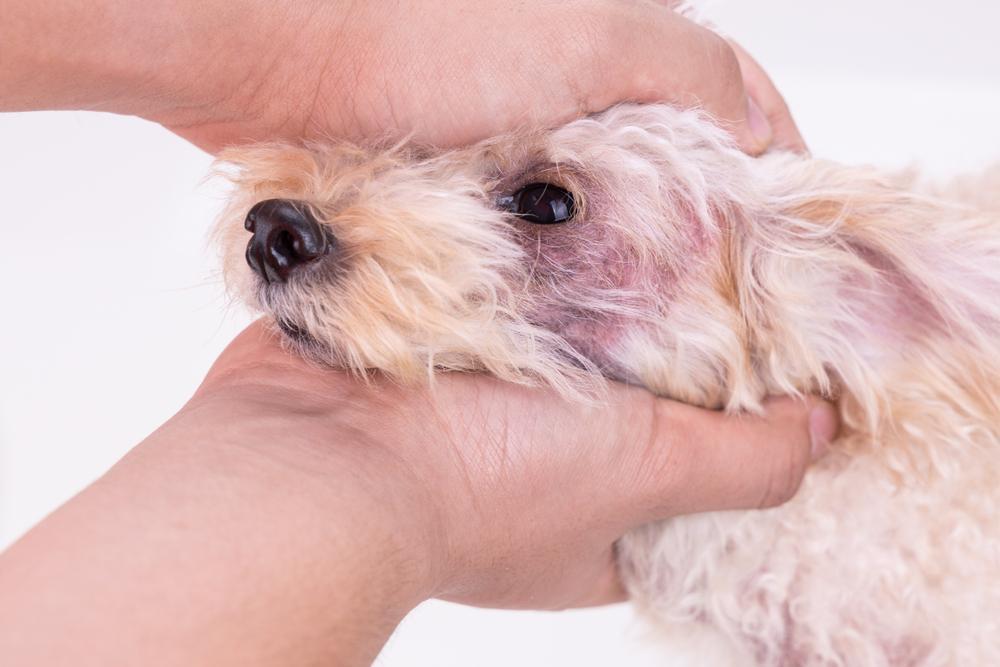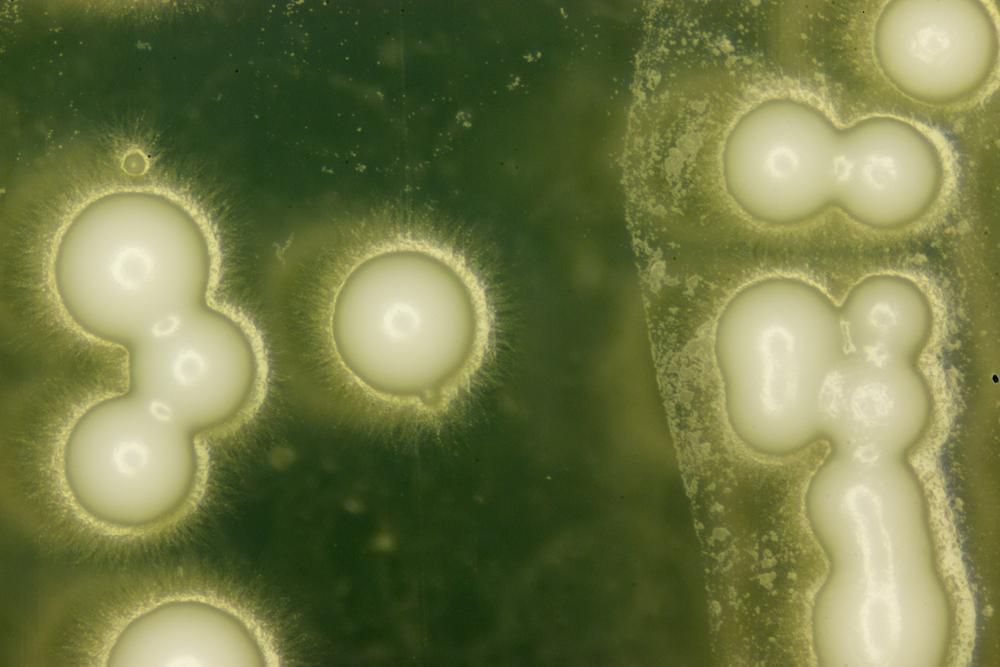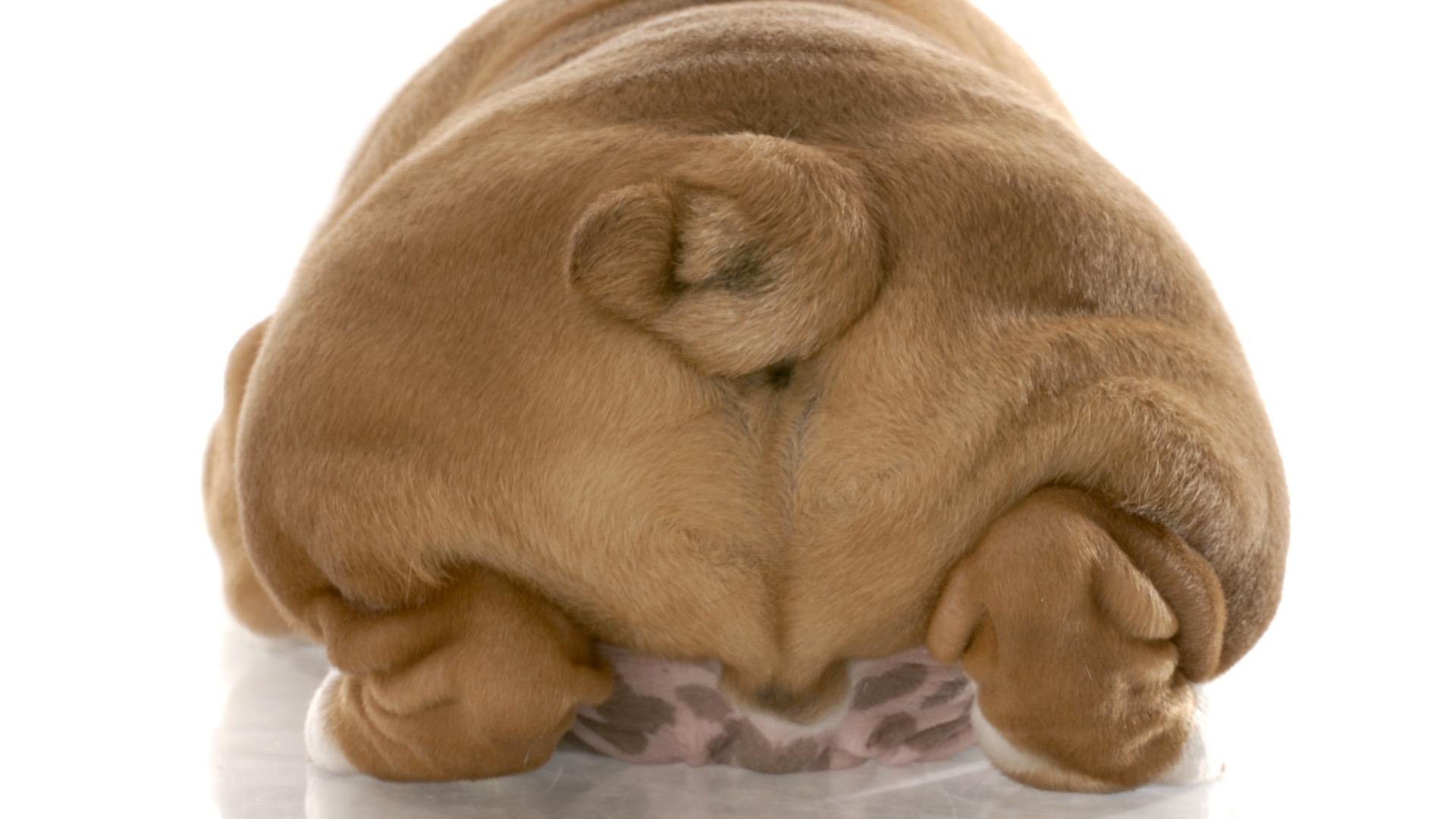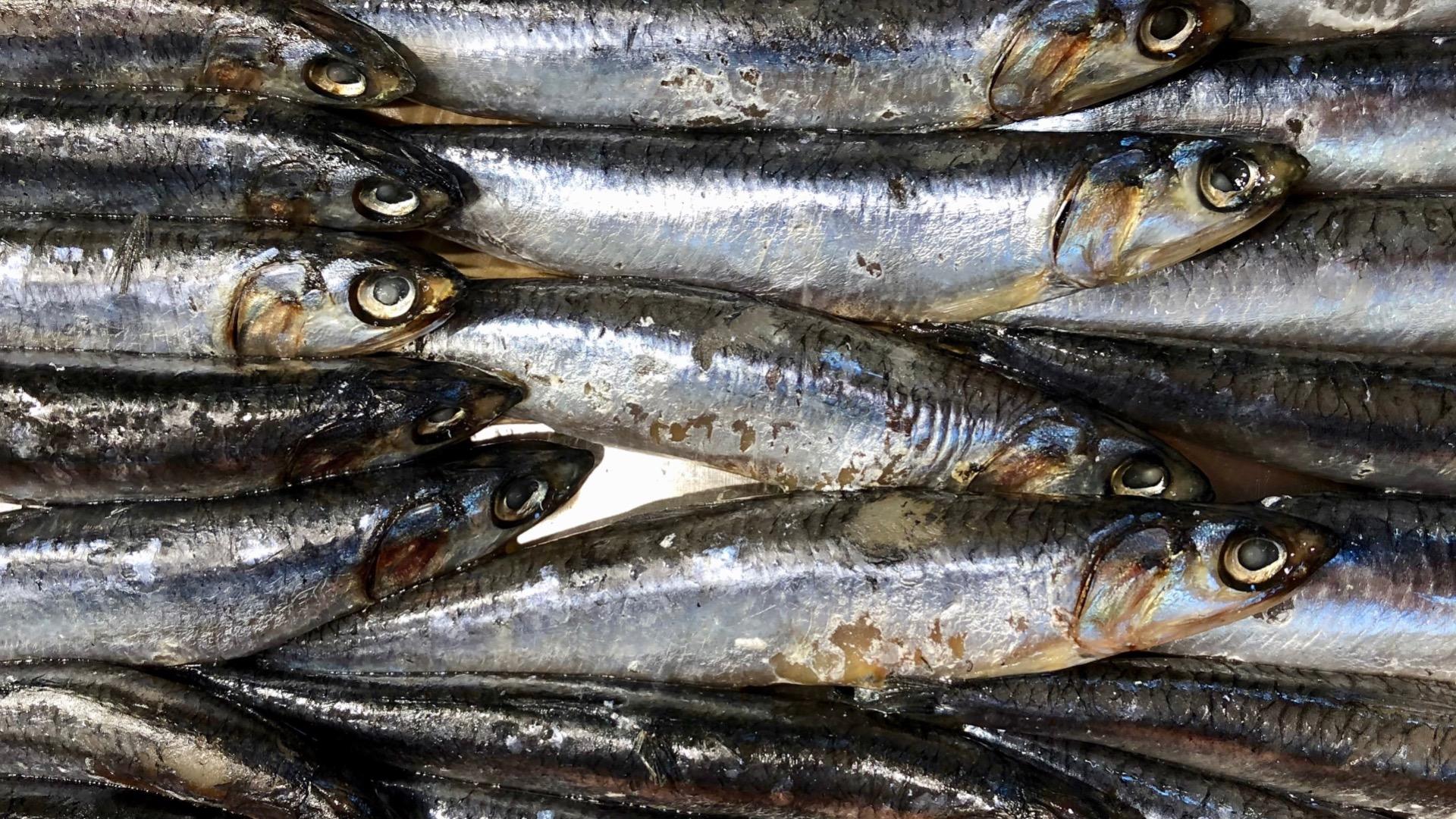Whilst dogs do demonstrate emotions, and you’ve probably seen images doing the rounds on the internet, dogs don’t cry. They have tear ducts like us humans, but when we are balling at the dog dying in,
I am Legend, our dog is probably still dreaming of squirrels, KO’d in front of the fire.
Not only do our tear ducts allow us to cry, but they form part of a larger system which has a nifty function. This function applies to our dogs too.
The Tear System
The tear system in the eye keeps it wet enough to be comfortable; you may have come across certain breeds of dog with a condition known as dry eye. This is exactly what it says on the tin, the eye is simply too dry. Tears contribute to eye defences as they contain antimicrobial factors and wash away foreign bodies and dirt. Not only that, but because the cornea has no blood vessels, tears also provide a way of brining nutrients to its cells.
The tear system has glands that make the tear fluid, openings that let the tears out and ducts inside of the nose that lets the tears drain through. After washing over the corneal surface, tears flow into the nasolacrimal system, draining into the nasal or oral cavity. The nasolacrimal duct begins with two small openings in the eyelids near the nose, one on the upper eyelid and one on the lower eyelid.
Tears are composed of water, electrolytes,proteins, lipids, and mucins; between 60 and 500 different proteins have been identified in tear film.
They are seen to have three layers.
The mucous layer contains mucins, immunoglobulins, salts, urea, enzymes, glucose, and leukocytes. Mucins form a barrier which protect against pathogens and debris. The gel-like barrier also facilitates the movement of particles, preventing shearing damage.
The aqueous layer consists of water, electrolytes, proteins, anti-microbial agents, cytokines, vitamins, immunoglobins, peptide growth factors and hormones. It lubricates, washes away foreign bodies, and nourishes the cornea with oxygen and proteins. Growth factors, vitamins and electrolytes are key to epithelial (cells that line the surface) integrity.
The lipid layer, the outermost layer, contains a range of lipids. It reduces evaporation from the underlying aqueous layer and limits contamination from dust and bacteria.
Tears are crucial to eye health.
Tear secretion is complex. It responds to the conditions faced by the eye, but also influenced by a range of hormones and cytokine balance.
Cytokine is derived from two Greek words, cyto meaning cell and kinos meaning movement. Cytokines are cell signalling molecules that aid communication in immune responses. They stimulate the movement of cells towards sites of inflammation, infection, and trauma. Cytokines are agents that modulate or alter the immune system response.
Cytokines are classified into:
– Lymphokines which are cytokines secreted by T cells and regulate the immune response
– Pro-inflammatory cytokines which amplify and perpetuate the inflammatory process
– Growth factors which promote cell survival and result in structural changes
– Chemokines which stimulate migration of cells
– And anti-inflammatory cytokines which negatively modulate the inflammatory response
It makes absolute sense that when faced with an ocular threat, cytokine levels increase, presenting as the usual immune response, water and itchiness which is common with seasonal allergies or intolerances. But what is also interesting is that that the rest of the body can also influence tear production.
Inflammation is an immunological defence against injury, infection, and allergy. Acute inflammatory response is short lived, levels are altered, the body is primed, the body fights, wins and returns to homeostasis. When there is a prolonged persistence of an antigen, chronic inflammation occurs and can have body wide ramifications.
The most considered is how chronic inflammatory diseases of the gut can cause various health issues; inflammatory bowel disease for example is caused by cytokine-driven inflammation of the gut.
This leads us to why, no matter what you apply to your white dog’s face, you can’t get rid of those stains.
Tear Staining
Epiphora as it is technically known is a condition which causes the abnormal overflow of tears. It results in reddish staining around the eyes.
The physical shape of your dog can contribute to the development of it; their head shape and where their eyes sit. Some breeds of dogs can over-produce tears due to a turning in of the eyelashes or eyelid. Turning out of the eyelid is also known in Great Danes, Bloodhounds and Spaniels. There may also be congenital abnormalities resulting in too large an opening of the eyelids, common in brachycephalic breeds.
Blockage of the nasolacrimal system can also result in the overflow of tears. This can be hereditary but can also be caused by inflammation of infection and in some cases tumour. There is also the risk of a foreign body lodged within the duct.
However, inflammation, resulting in the overflow of tears can be infectious or immune-mediated.
Supporting your dog’s immune system could be the missing piece of the puzzle when tackling tear staining.
Immune Response and Inflammation
There are many things that can kick start an inflammatory response in your dog:
- Untreated acute inflammation such as infection or injury
- Long term exposure to irritants (chemicals, polluted air etc)
- Chronic stress
- Over-nutrition and obesity (increased metabolic processes)
- Malnutrition
But there are changes that can be made.
Nutrition and Inflammation
Dietary patterns high in refined starches, sugar and saturated and trans fatty acids have been linked to the activation of the innate immune system, resulting in an excessive production of pro-inflammatory cytokines. The consensus is that a less processed diet is associated with reduced markers of inflammation. However, calcium, magnesium, Vitamin D and Omega-3 Fatty Acids are thought to protect against inflammation.
Findings here
Add foods like green leafy vegetables and fatty fish like salmon, sardines, and mackerel to your dog’s diet. Beef liver is a great source of Vitamin D too!
Antioxidants too help counter oxidative stress which is a key player in inflammation.
Astaxanthin is a powerful antioxidant found in microalgae. It has been found to have a much higher antioxidant activity than other carotenoids, demonstrating the inhibition of inflammatory mediators. Not only that but in both cats and dogs, astaxanthin has enhanced immune responses against tumours and virus-infected cells and seems to have an affinity to the eyes.
Findings hear
Astaxanthin is found in algae, salmon, yeast, trout, krill, and shrimp. Astaxanthin is usually responsible for the pink pigmentation found in these rich sources of food.
Vitamin E is also a renowned antioxidant, but it too has anti-inflammatory properties.
Findings here
Sources of Vitamin E include sunflower seeds, collard greens, spinach, pumpkin, red bell pepper and mango. Chicken thigh cuts appear to have the highest Vitamin E content, followed by chicken breast and then pork shoulder. The absorption of Vitamin E is significantly improved when consumed with eggs!
Findings here
In our practise, the wonderful Omega-7 known as seabuckthorn oil, has in certain cases been integral to the support of dry eyes. Seabuckthorn, taken orally, has been shown great promise in supporting the mucus membrane and the fatty acid composition of tear film lipids found covering the eye. This in turn can help tear stains.
Findings here
Environmental
Emerging evidence suggests that chronic and mixed exposure to specific chemicals may act to disrupt the immune system.
These include pharmaceuticals, paints, detergents, cosmetic products, food additives, pesticides and many more. Inflammation is a biological response to harmful stimuli, so it is no surprise that in a modern world of consistent threats that chronic inflammation results. Reducing exposure to these disruptors can give your dog’s immune system a well-needed break.
Chronic Stress
Stress is a biological response to a perceived threat. The autonomic nervous system is one of the major neural pathways activated by stress. The sympathetic system is activated to fight or fly. When the threat has been dealt with, the parasympathetic system kicks in and returns the body to homeostasis. In situations of chronic stress, the sympathetic nervous system is continuously activated without the normal counteraction of the parasympathetic nervous system. As a result, the immune system is activated with increased levels of pro-inflammatory cytokines. Dogs can become stressed for several reasons like a change in routine, unsettled owners, loud noises, other pets, or the plethora of perceived threats when out on a walk. Trigger stacking can occur in the dog, where they are consistently exposed to stressful experiences without the opportunity to recover. This is chronic stress.
Stress signs in the dog include pacing, vocalisation, excessive drooling or panting in the absence of food or exercise, lethargy, and fatigue or on the other side of the scale, hyperactivity. You may notice hair changes or loss and digestive issues may accompany. There may also be new behaviours, that you have never seen your dog demonstrate.
Chronic stress can deplete the nutritional status of your dog. During the sympathetic response, energy is directed away from the digestive system and to the brain and limbs. Without a properly functioning digestive system, nutrients just aren’t absorbed and utilised as well as they could be. The additional requirements of the cells involved in the stress response can also deplete certain nutrients further.
Over-nutrition and Obesity
Metabolism is the process by which your dog’s body converts what they eat and drink into energy. Chronic over-nutrition causes additional metabolic pressure on the body, resulting in inflammation. This is deemed meta-inflammation. So, if your dog is packing a little extra weight, there are likely elevated circulating pro-inflammatory cytokines.
Whilst there can be a number of factors which contribute to obesity, excessive intake of processed foods is relatively high on the list.
Summary
In the absence of physical blockages or anatomical reasons for the abnormal overflow of tears, your dog’s immune system could well need some support. Tear secretion is complex, but it can be influenced by a range of hormones and cytokine balance. Cytokines are agents that modulate immune system response and inflammation is the result. Acute inflammation is short lived, the threat is dealt with and the body returns to homeostasis, the issue arises when there is a persisting antigen, resulting in chronic inflammation. There are many causes of inflammation in the dog, from what you choose to feed, to the environment they live and the products they are exposed to. Not only that, but chronic stress continuously activates the fight or flight system,without giving the rest and digest system time to counterbalance.
If you have explored anatomical and breed specific causes for the tear staining on your dog’s face and come up empty, you may want to consider other factors. You can always check out our consultation services
here.
Thanks for reading.
MPN Team x




